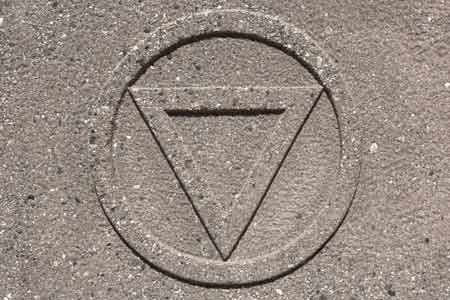Tradition in Motion
Building on the strengths of a world-class program, Springfield College creates new ways for its graduates to serve in the field of wellness
USING A LAPAROSCOPIC CAMERA, Sarah Headley ’14, G’15, serves as the “eyes” for a surgeon performing a procedure to remove a patient’s gall bladder in an operating room at Mercy Medical Center in Springfield.
The opportunity to be in the thick of medical procedures like that occurred during Headley’s six-week surgical rotation at Mercy in her fifth and final year in the Springfield College Physician Assistant (PA) Master of Science program this past winter.
“I was able to put together things I learned in the classroom and cement them in my memory. Everything you learn builds and accumulates, and you’re able to apply all that knowledge when you’re hands on with a patient,” the 22-year-old says.
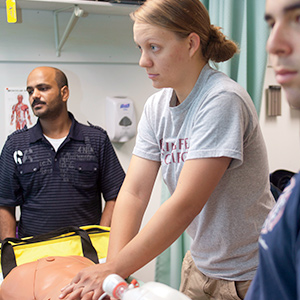
The experiences of Headley and other physician assistant students speak to the top-quality preparedness provided inside and outside the classroom, and are a shining example of why students from that program — for the past seven years — have received a 100 percent pass rate on the National Commission on Certification of Physician Assistants Certification Examination on their first try.
But the PA program is not alone in its outstanding preparation of students for careers in the health sciences. The physical therapy (PT) program has had just as much success in recent years with students having a 100 percent pass rate for the National Physical Therapy Examination every year since the first PT doctoral class in 2011, and graduates finding immediate career opportunities in assisted living facilities, public schools, and wellness and rehabilitation centers.
Under the umbrella of the School of Health Sciences and Rehabilitation Studies (HSRS), both programs are aligned with the world-renowned tradition of physical education (PE), wellness, and the Humanics philosophy that have been the hallmark of the College since 1885.
The PE program, in the School of Health, Physical Education, and Recreation (HPER), helped lay the foundation for expansion into other health sciences, and has allowed programs like PA and PT to grow and prosper.
From tradition comes progress, say leaders in the PE, PT, PhD and PA programs.
Program Evolution
David J. Miller, PT, PhD, professor of physical therapy and the dean of HSRS, says his school’s statistics on enrollment and faculty demonstrate the evolution. Enrollment in HSRS, which includes PT, PA, emergency medical services management, occupational therapy (OT), and rehabilitation and disability studies, has grown from 530 in 2005 to 860 students during the last decade. Along the way, the School added majors in communication sciences and disorders and health sciences. Concurrently, the number of HSRS faculty increased from 26 to 36.The outstanding pass rate of the certification exam and encouraging job prospects attract top students who have certain expectations, Miller says.“Prospective students and their families are looking for a return on investment, which is a business model. But, as a parent, I get it. You want your child to be gainfully employed upon graduation,” Miller says. “Our numbers for employment out of the big programs are at, or near, 100 percent. And the 100 percent pass rate for first-time test takers is an extraordinary record.”Much of the early success of HSRS came from the strong leadership of William Susman, the school’s first dean, who promoted interdisciplinary partnerships among programs, Miller says.
For many years, there has been a strong link between the HSRS programs and those in HPER, which include PE and other programs, such as athletic training (AT). For example, the two schools jointly sponsor a clinical anatomy course with students from PT, OT, and AT participating in what Miller describes as a “wonderful blend across schools and across disciplines.”
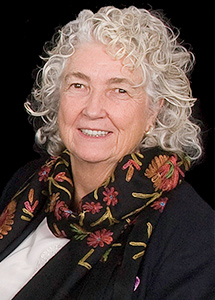
Physical education has been the flagship program of the College since its beginnings as the School for Christian Workers and the International YMCA Training School, explains Mimi Murray, PhD, ’61, G’68, professor of exercise science and sport studies (ESSS), and the longest-standing faculty member. Maintaining that tradition is critical to the future growth of other health and wellness programs, she says.
“President [Mary-Beth] Cooper is very respectful of our history, but she also sees the need for us to move forward. We need to use the strength of the tradition of the physical education program to continue to branch out and develop new and successful programs like PA and PT,” says Murray.
The important and forward-thinking teachings of the person who was considered the “father of physical education” at the College, Luther Halsey Gulick, still resonates today, Murray says. People from all over the world came to study under him with his focus on science-oriented courses, she noted. Gulick developed the College’s inverted equilateral triangle logo (see page 11) to represent the Humanics philosophy of educating the whole person — in spirit, mind, and body — for leadership to others.
Charles Redmond ’68, G’71, immediate past HPER dean and associate professor of ESSS, agrees that the science-based curriculum has helped the College remain the premier physical education teacher preparation college in the Northeast and beyond. The courses under the PE major, such as anatomy, chemistry, physics, exercise physiology, and biomechanics, are critical to the overall education of the student, he says.
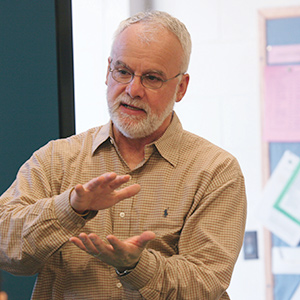
“The strength of the PE program allowed us to transition into those applied exercise sciences like athletic training,” Redmond says. “These programs — PA, PT, and PE — are very mission driven. Very few schools can pull [this type of transition] off and survive.”
The early leaders in the PE discipline taught people about movement, which progressed into other applications such as health fitness and applied exercise science, he says.
Stephen C. Coulon, PhD, professor and chair of the physical education and health education department, believes the link between PE and the health and wellness programs that have flourished at the College is the consistent offering of a mix of opportunities for students to broaden their experiences.
“Over the years, we have done things well and, in some ways, more uniquely than other schools,” says Coulon, explaining that Springfield College physical education students begin receiving teaching experience very early in their academic careers. “If you say you graduated from Springfield College, it means something.”
The same can be said for some of the newer programs, he notes. Much program growth stems from the value placed on movement and the holistic aspect of wellness, he says, allowing other programs like PT to develop.
Students such as physical education and health education dual major Daniel Green are keenly aware of the school’s historical expertise for building skills, as well as teaching and coaching confidence.
“I am a 20-year-old old kid and I could easily go in and teach any class of any skill because of the program I have been through,” says Green, a junior. “Most people my age haven’t taught a single class yet. This makes me more marketable for jobs.”
It’s the attention to detail that Green has appreciated so far in his education. For instance, during his pre-practicum teaching of physical education at a local school, his lessons to the students were videotaped so that he could later review his performance.
“It’s an incredible opportunity to see if you’re [properly] applying the content knowledge you learned in class, giving you a ‘realistic vantage point,’” says Green, who is a pitcher on the Pride baseball team. “This is really important moving forward to becoming a better teacher.”
The Calling to Physician Assistant
Charles Milch, chair of the PA program, says the success of the program comes in part from the support of President Cooper, Dean Miller, and Provost and Vice President for Academic Affairs Jean Wyld, PhD.
“Our goal is not to wash students out of our program; it’s to make them successful. Whenever they’re successful, we win. We’ve done our job. We take pride in our students,” Milch explains. “We have received tremendous support and it really matters.”
The program is more than what students read in a textbook or observe in a clinic. The drive to succeed as a PA starts with believing the occupation is a vocation, a calling.
“We really believe that all of us, as physician assistants, have been called to this profession,” Milch says. “The students have that calling, too.”
With more and more demand for physician assistants, due in part to increased access to healthcare through President Obama’s Affordable Care Act, it is critical that students in the program are ready to jump into a job after passing their boards, Milch explains.
“I encourage medical organizations like hospitals and practices to be preceptors for clinical rotations, because they get an opportunity to try out our students, and students get the opportunity to make connections and see if they’re a good fit,” he says.
For Headley, whose father, Samuel Headley, PhD, professor of exercise science and sport studies at the College, urged her to enroll, the PA program has more than lived up to its reputation.
“Learning about the passing rate and hearing how Springfield College PA students typically have great careers were definite factors in my wanting to go to school here,” she says.
Once in the program, Headley appreciated the pride that faculty members take in teaching students to be model citizens, no matter what career path they choose.
“Whether it’s on campus or in extracurricular activities, you have to be aware of who you are and what you represent,” she says. “They instilled in all of us … that sense you are representing the program wherever you go.”
Physical Therapy Program Developed
The impetus for the PT program came out of a combination of factors, says Julia Chevan, PT, PhD, MPH, OCS, professor and chair of the Physical Therapy Department, including the work of several members of the physical education faculty who were licensed PTs. Also, “there was such pressure to get a physical therapy program at the College [because] we were graduating so many people in physical education who went on to become physical therapists.”
Like the PA program, PT is a much sought-after degree because of the faculty’s exceptional knowledge of the field, which contributes to the intellectual growth of the profession, Chevan says.
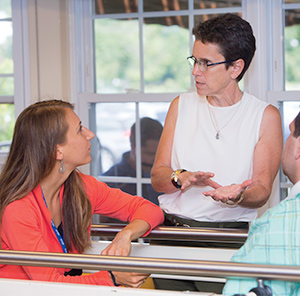
“Our faculty members understand the nature of what needs to be in a curriculum, how to best deliver that curriculum, and how to stay abreast of current changes so the curriculum is nimble enough to change as needed,” she says.
A special feature of the program is that members of the faculty all are licensed healthcare providers who have direct field experience, she says. With that comes the “challenge of straddling the clinical side of PT and the academic side of PT,” she says.
“Our faculty members do a tremendous job of keeping their feet in both worlds,” Chevan says.
The program’s excellent reputation also comes from those who have already graduated, she says.
“Because we have graduates who have gone on to become wonderful clinicians and provide high-quality care to the person who is really at the center of all this — our patient — they really promote the reputation of the program,” she says.
As part of her experience in the PT program, Mary Monahan ’G16, appreciates the College’s Humanics philosophy and commitment to service to others. She has had the privilege of volunteering through the PT program at an on-campus clinic that provides pro bono health services to stroke survivors from the community. Students assist the participants with health maintenance as they learn to live better in the aftermath of their stroke, helping with everything from range-of-motion stretching to teaching them how to improve their balance.
“It’s nice to see myself progress from just getting used to talking to patients and then being able to apply therapeutic services to really help them,” says Monahan. “Many of these people might not be able to afford this kind of care if our program didn’t offer it to them. It’s a great program for students and patients.”
The stroke survivor program is exactly the kind of opportunity through which students can learn the value of the Humanics philosophy, Chevan says.
“My hope is that our students not only want to be great clinicians, but they look back and say ‘you know, I have a 40-hour work week and I have five extra hours so I can go provide a service at the clinic down the street,’” she says. “We want them to have this social responsibility” that is cultivated by service learning.
As far as the future of the health sciences, College leaders are optimistic about new growth and enhancement of current curriculum, clinical opportunities, and service programs.
For Chevan, it’s all about going above and beyond teaching and practicing.
“We are on the cutting-edge, the next phase of professional development of PT, and we are making sure people know about it by publishing in a broad range of areas from clinical education work to health services type research,” she says.
Redmond and Coulon believe the key to future program success depends on cooperation among disciplines.
“If professionals step back, and see folks as part of a team delivering either exercise science or health science or whatever else they do rather than as competition, the recipient of their services ultimately benefit,” says Redmond.

